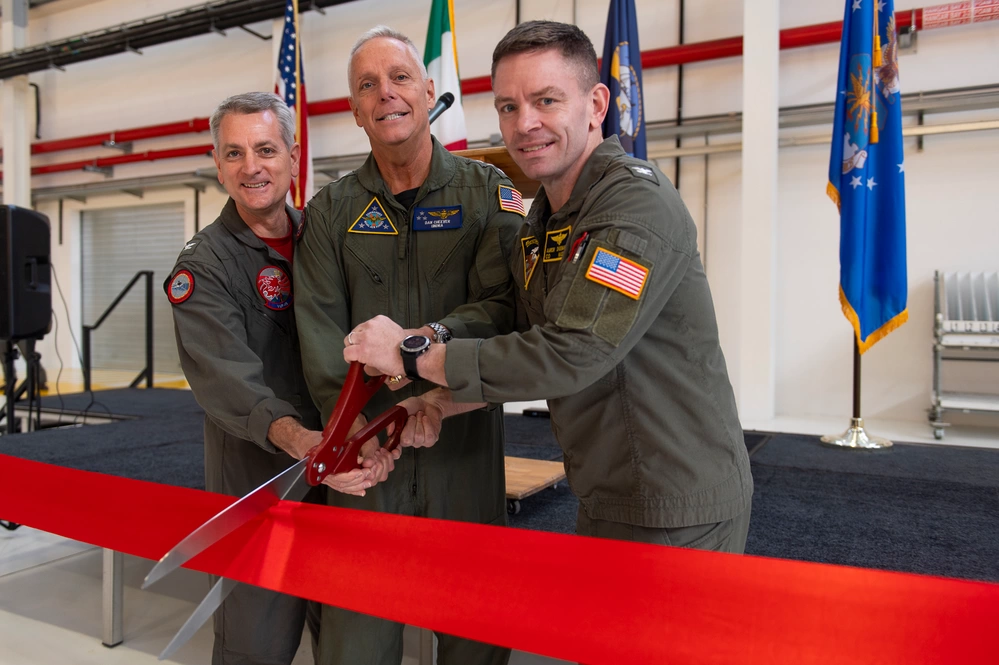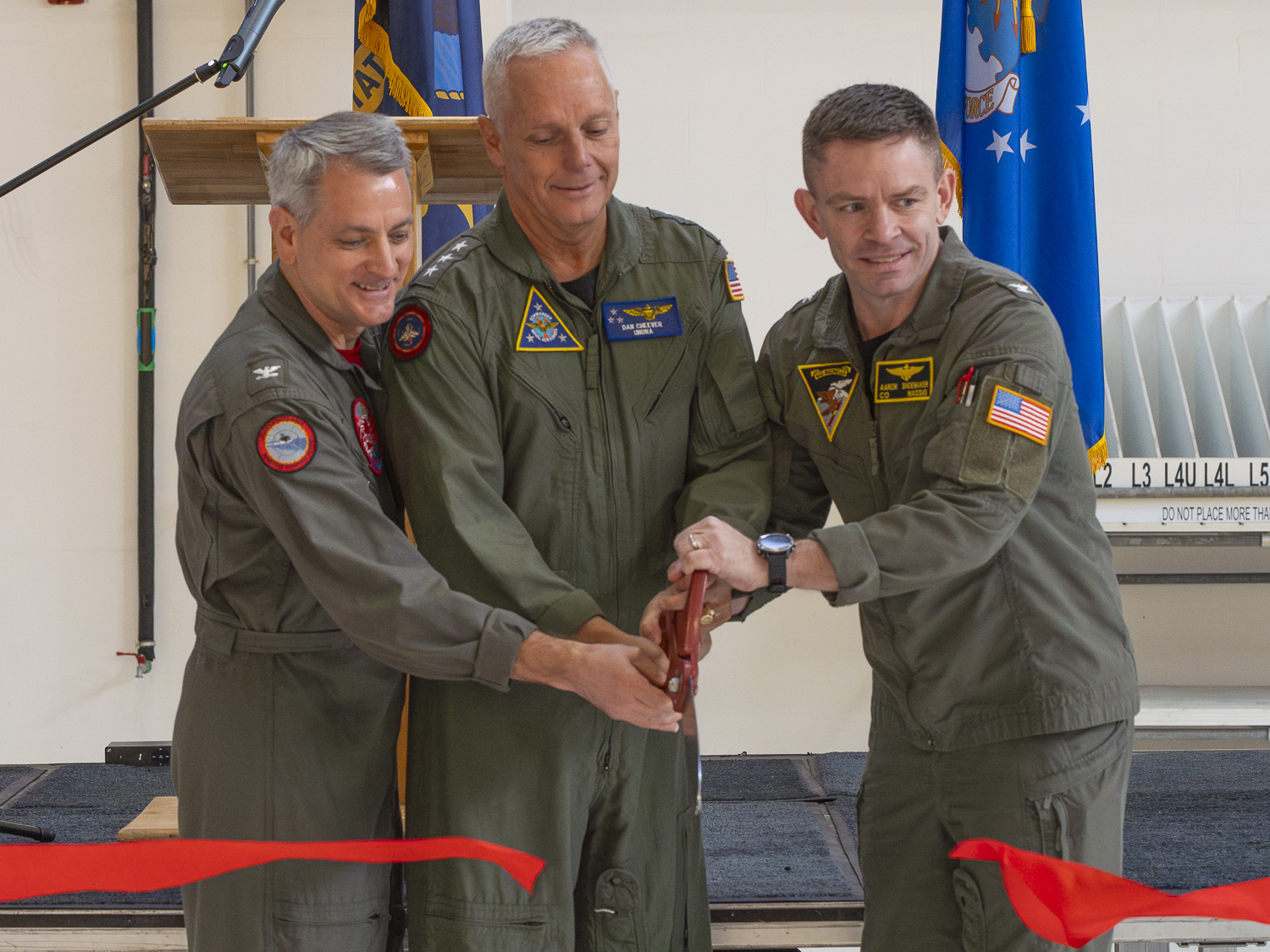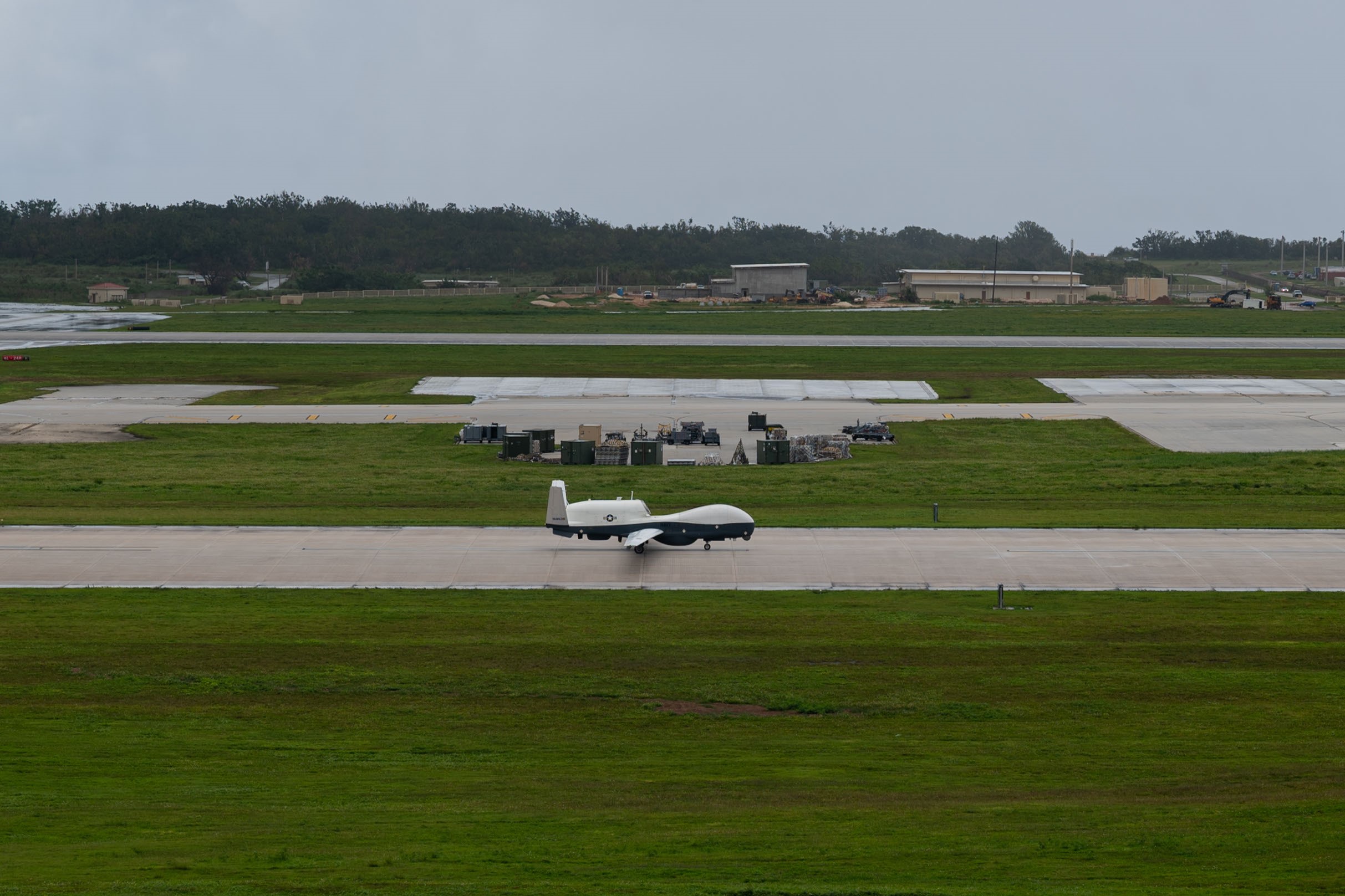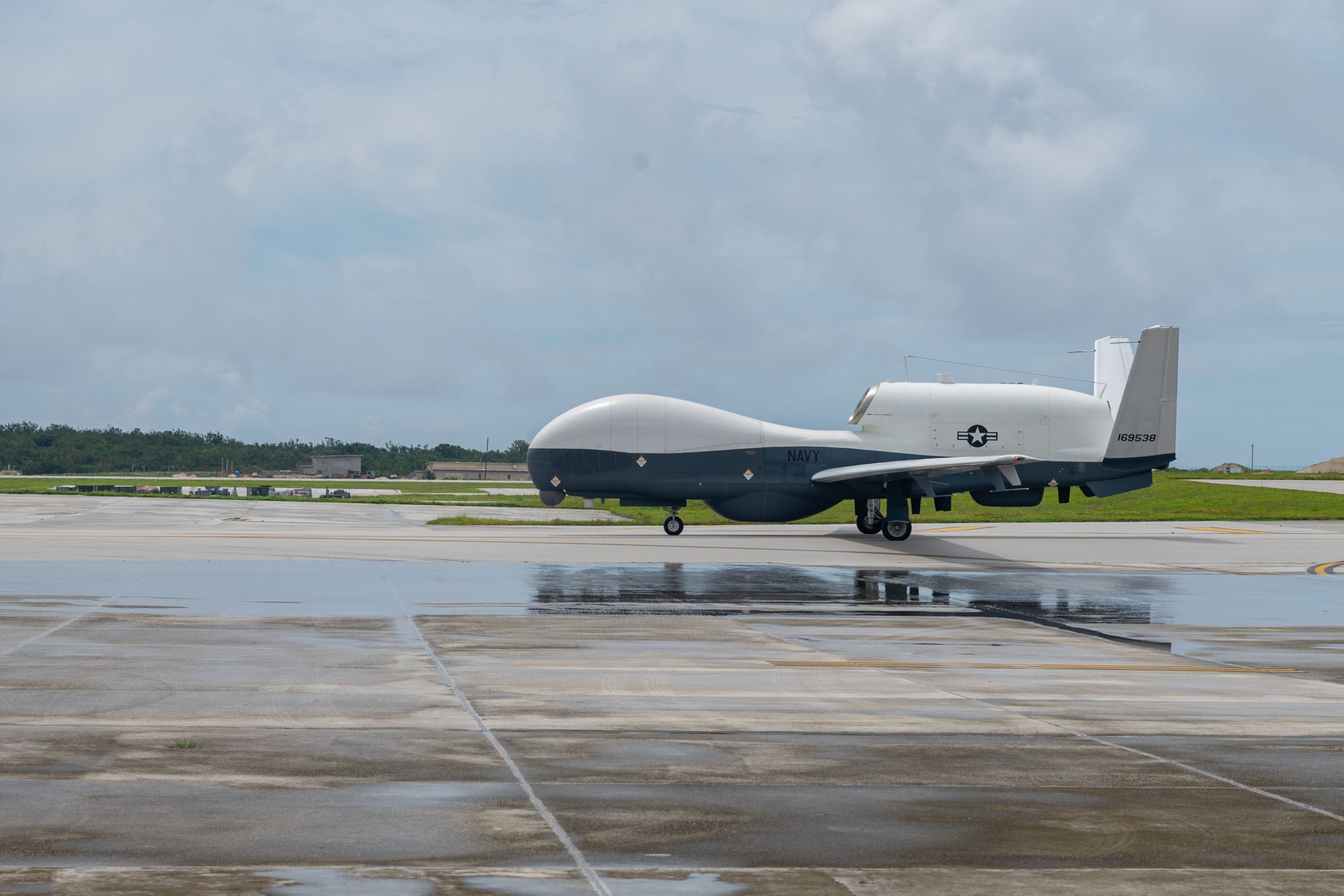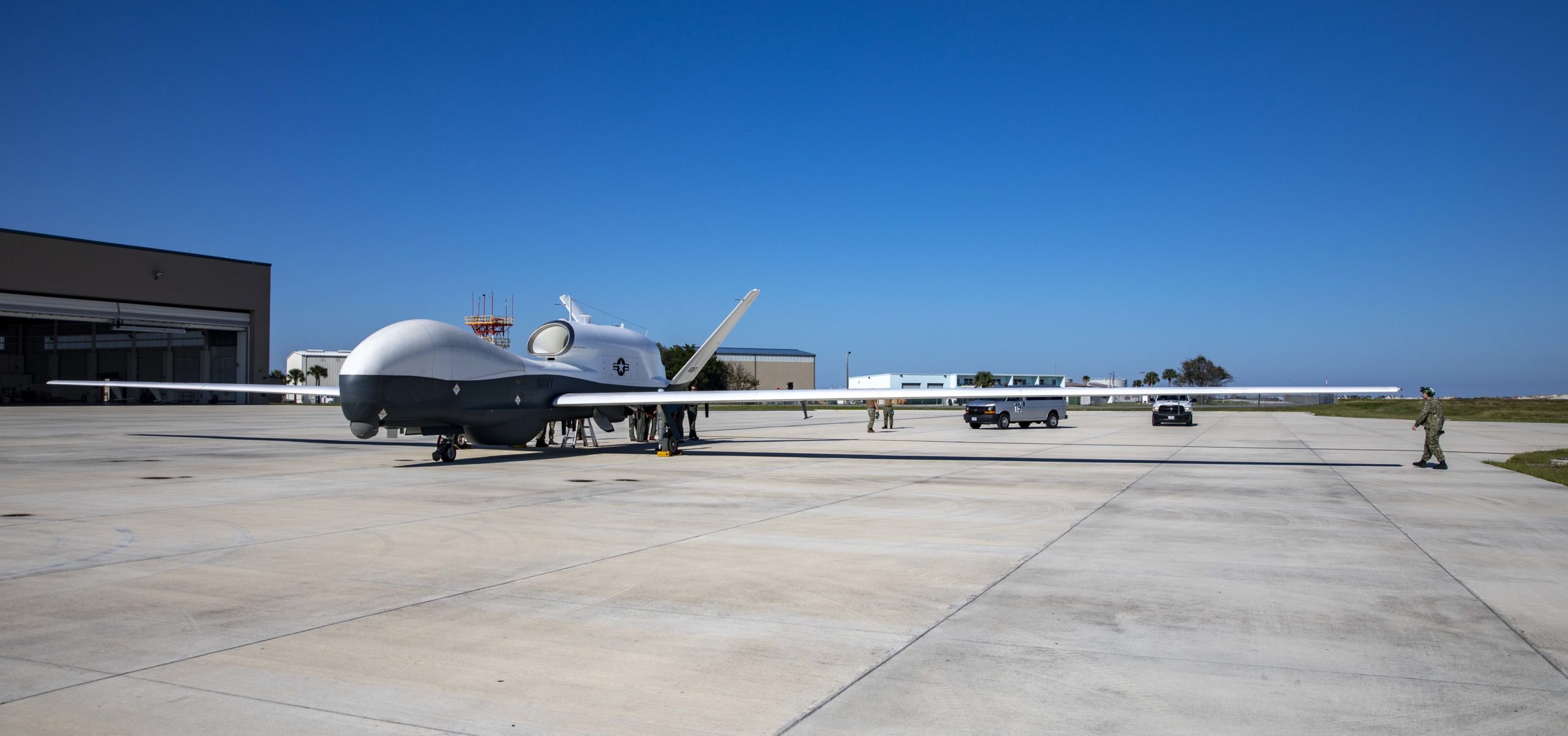By Robbin Laird
The Triton is a key member of the Navy, joint and allied forces shaping a kill web maritime force.
It is so important in my view for the maritime forces that I put a graphic highlighting the Triton coming to the Royal Australian Air Force.
Yes RAAF!
For a maritime kill web is not just about ships: it is about the integrated distributed multi-domain force which can operate throughout the global maritime domain.
As Ed Timperlake and I argued in our book entitled, A Maritime Kill Web Force in the Making:
While the P-8 can operate with autonomy and network-ability, the Triton is a network-generating, network-enabling asset. The vast amounts of data provided by Triton is requiring the Navy and the joint force to rework how to handle data flows from the unmanned asset to gain combat advantages.
Put another way, traditional methods of handling data are not adequate to manage properly such massive amounts of information.
In fact, learning how to manage data from Triton has been a key driver for change in how to redesign the ISR to C2 empowerment systems, which the U.S. Navy seeks to execute for distributed maritime operations.
We also discussed the allied aspect as well.
In one of our 2020 interviews with him, Rear Adm. Peter Garvin, head of the Maritime Patrol Reconnaissance Force, provided a very clear perspective on how this was happening in his domain.
The Australians and possibly other allies are acquiring or working with Triton as well.
As Garvin noted: “These relationships serve as force multipliers, which opens the door to cooperatively leverage technology to deliver networked sensors and a shared understanding of the decisions and options we share across the extended battlespace.
“Our allies understand the fundamental nature of their region better than we do. If you have properly maintained these important working relationships, both interpersonal and technological, then you will have access to the cultural knowledge and human geography that might otherwise would not be available to you.
“We become stronger interactively with our allies by sharing domain knowledge to operate across a wider geographical area. In effect, we are shaping kill web “matesmanship.”
The Navy has already forward deployed Triton to the Pacific and now it has done so in Europe.
As a March 2, 2024 Navy story highlights this development:
Unmanned Patrol Squadron (VUP) 19 “Big Red,” held a ribbon cutting ceremony to celebrate the inaugural deployment of its second forward-deployed detachment and the opening of a new MQ-4C Triton hangar at Naval Air Station Sigonella, Italy, March 2, 2024.
“This ceremony demonstrates Naval Aviation’s continuing efforts to develop new concepts and technologies, and integrate them efficiently into the Fleet,” said Vice Adm. Daniel “Undra” Cheever, Commander, Naval Air Forces.
“The MQ-4C Triton will be an essential platform for the future of maritime patrol and reconnaissance, with advanced warfighting technology to put more players on the field.”
Leading up to the ceremony, Rear Adm. Adam Kijek, Commander, Patrol and Reconnaissance Group, also toured the hangar and held a separate All Hands Call with VUP-19 Sailors, who showcased the MQ-4C Triton, the Navy’s newest Intelligence, Surveillance, and Reconnaissance Maritime Patrol asset.
“We are excited to honor the legacy of ‘Big Red’ with our newest detachment here in Sigonella,” said Lt. Cmdr. Cory Solis, officer-in-charge, VUP-19 Sigonella.
“My team has been working extremely hard to stand up this detachment, so to witness them overcome so many barriers and participate in this ribbon cutting ceremony is a major victory for all of us.”
VUP-19 is the first and only unmanned patrol squadron and will set a baseline for training Sailors and officers on the tactics, techniques and procedures of operating the MQ-4C Triton for future warfighting.
“We are happy to have VUP-19 on deck and look forward to supporting the squadron as it strengthens the Fleet’s readiness and capability in the U.S. 6th Fleet area of operations,” said Capt. Aaron Shoemaker, commanding officer, NAS Sigonella. “
The addition of the Triton to Sigonella’s unmanned systems capabilities is also a strategic win because it augments the capabilities of our P-8 Poseidon detachments to provide broad area, intelligence, surveillance, reconnaissance and targeting capabilities.”
While the Sigonella detachment is VUP-19’s newest addition, the squadron can date its modest beginnings to Reserve Patrol Squadron 907, which was established July 4, 1946. After many re-designations, VUP-19 as it is known today, was officially established Oct. 1, 2013 and later commissioned Oct. 28, 2016.
VUP-19 is currently homeported in Florida at Naval Air Station Jacksonville and Naval Station Mayport, with a detachment at Andersen Air Force Base, Guam.
Naval Air Station Sigonella provides consolidated operational, command and control, administrative, logistical and advanced logistical support to U.S. and other NATO forces.
The installation’s strategic location enables U.S., allied, and partner nation forces to deploy and respond as required, ensuring security and stability in Europe, Africa and Central Command.1
And this effort adds to the critical capability which is already operating from Sigonella and has already contributed to NATO’s defense in a time of the conflict in Ukraine.
It can be forgotten that NATO has built and is operating its own squadron of Global Hawks which have been very active in European defense.
As I noted in a 2022 article by NATO’s AGS force:
One aspect of the run up to Ukraine crisis 2022 has been virtually ignored.
Unlike earlier NATO crises, in this one European NATO states have access to their own overhead intelligence means of high quality.
In addition to commercially available satellite imagery, French-driven European partner capabilities and the now functioning NATO AGS system are key providers for intelligence independent from the United States.
The NATO Alliance Ground Surveillance system was IOCd on February 15, 2021.
According to NATO:
“NATO is acquiring the Alliance Ground Surveillance (AGS) system, which will give commanders a comprehensive picture of the situation on the ground. A group of 15 Allies is procuring the AGS system comprised of five NATO RQ-4D Phoenix remotely piloted aircraft and the associated European-sourced ground command and control stations.
“NATO will then operate and maintain them on behalf of all NATO Allies. The AGS NATO RQ-4D aircraft is based on the US Air Force Block 40 Global Hawk. It has been uniquely adapted to NATO requirements to provide a state-of-the-art Intelligence, Surveillance and Reconnaissance (ISR) capability to NATO.”2
And another NATO piece highlights who is getting access to this high-grade intelligence,
“The AGS system is being acquired by 15 Allies (Bulgaria, Czech Republic, Denmark, Estonia, Germany, Italy, Latvia, Lithuania, Luxembourg, Norway, Poland, Romania, Slovakia, Slovenia and the United States), and will be made available to the Alliance in the 2017-2018 timeframe.
“All Allies will contribute to the development of the AGS capability through financial contributions covering the establishment of the AGS Main Operating Base, as well as to communications and life-cycle support of the AGS fleet. Some Allies will replace part of their financial contribution through ‘contributions-in-kind’ (national surveillance systems that will be made available to NATO).
“The NATO-owned and operated AGS core capability will enable the Alliance to perform persistent surveillance over wide areas from high-altitude long-endurance (HALE) aircraft, operating at considerable stand-off distances and in any weather or light condition.
“Using advanced radar sensors, these systems will continuously detect and track moving objects throughout observed areas and will provide radar imagery of areas of interest and stationary objects.
“The main operating base for AGS will be located at Sigonella Air Base in Italy, which will serve as a NATO Joint Intelligence, Surveillance & Reconnaissance (JISR) deployment base and data exploitation centre.”3
1 Petty Officer 2nd Class Kelsey Culbertson, “VUP-19 Welcomed to NAS Sigonella, Celebrates New MQ-4C Triton Hanger,” DVIDS (March 2, 2024).
2 https://www.nato.int/cps/en/natohq/topics_48892.htm
3 https://www.nato.int/nato_static_fl2014/assets/pdf/pdf_2016_07/20160627_1607-factsheet-ags-en.pdf


